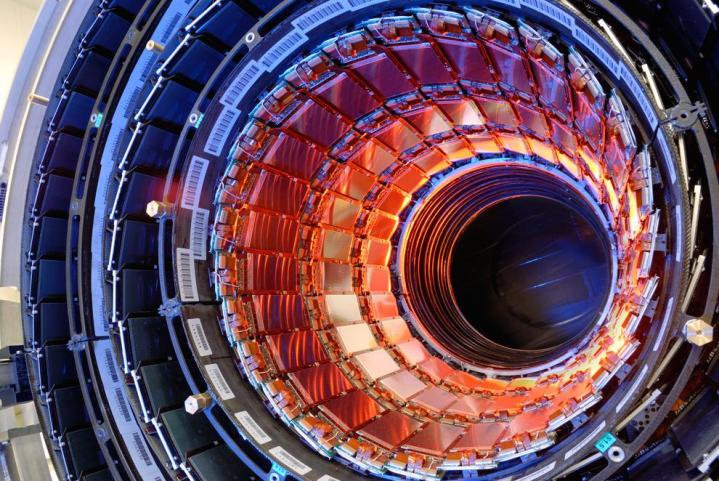
Frost, who has a background in time-lapse and astrophotography, was the perfect fit for the very “pro-science” band — on a previous tour, U2 “featured a live link to astronauts on the International Space Station, who spoke to the audience,” and as it turns out, several of the band members are very well connected to heavy hitters in the physics world.
When Frost almost jokingly asked to be sent to “CERN and a server farm,” he didn’t expect for his seemingly bizarre request to come to fruition. But boy, did it ever. Speaking with The Creators Project, Frost explained, “[The Large Hadron Collider], for those who don’t know, is the biggest machine mankind has ever created. It’s a 22-mile ring of magnets 100 meters underground that smashes particles together at nearly the speed of light. The pieces of the particles go flying into gigantic particle “cameras” (detectors) the largest of which is seven stories tall. There are thousands of scientists from countries that are normally mortal enemies such as India, Pakistan, Israel, and Iran all working together trying to figure out what the universe is made of at a very small scale. It is a real-life manifestation of the best traits of mankind on a grand scale.”
As such, the collider seemed to be the perfect illustration of humanity’s connectivity, and for a week, he was allowed to photograph essentially at will. Said Frost, “I’d go into an experiment and basically say, ‘Hello, could you please halt the scientific progress of humankind and turn off the lights for four hours so I can make some pretty pictures?'”
Ask and you shall receive, it seems, especially when your client is U2.
Now, the incredible photographs are being shown to audiences on enormous screens as U2 plays concerts across the world, delighting fans with both aural and visual stimuli. Each song is matched to a series of photographs to create a fully immersive experience, and the results seem to be a real crowd pleaser.
So while you may not want to be forced to listen to their album on your iPod, it may just be the case that seeing it live, with Frost and CERN’s art, may make all the difference in the world.


